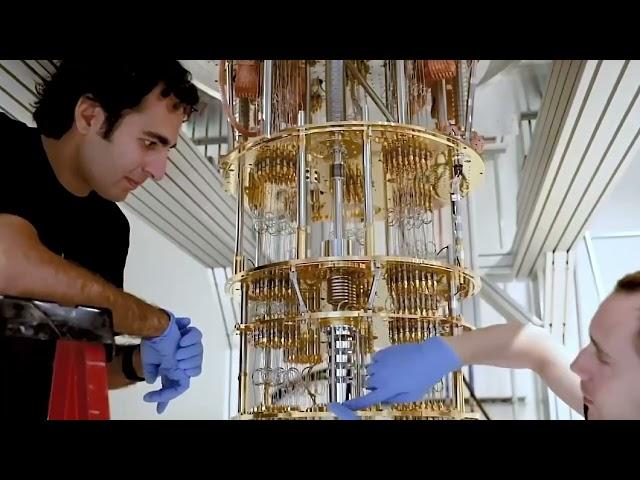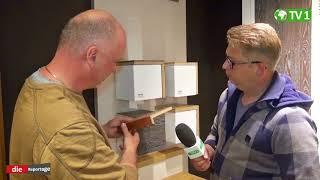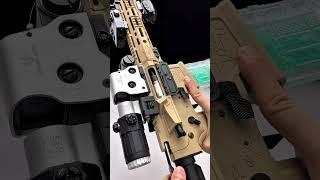
超导材料的热现象分析 2
Intelligent Analysis of Physics---- Thermal Phenomena Analysis of Superconducting Materials - Part 2
—author chunke huang
The analysis of thermal phenomena reveals that the resistance of conductor materials is formed by the electromagnetic coupling of electron flows in the conduction band and the electromagnetic coupling effects of all particles in the lattice, which affect the electron flow. Their combined action constitutes the magnetic fluctuations on the electron flow conduction band and manifests as a resistance phenomenon.
The mechanism that impedes the free movement of electrons or other particles is called a potential barrier, which is caused by the high potential distribution within the lattice. At interfaces with a large potential difference, the electromagnetic coupling effects induce larger reactive forces on the electrons, preventing them from passing through.
The transmission characteristics of potential barriers can be described by the tunneling effect. According to the tunneling effect, there is a certain probability that particles can penetrate through the barrier even if their energy is lower than the height of the potential barrier. This barrier is similar to a resistor, both of which are produced by electromagnetic coupling effects. Therefore, the potential barrier effect and the resistance effect are continuous and do not exhibit quantization.
The mechanism of the conductor's conduction band is, in fact, a miniaturized version of the superconducting effect. Within the lattice of a material, electrons freely flow along equipotential lines within the lattice. However, this flow trajectory cannot deviate from the outermost electron orbit of atoms.
The outermost electrons of various atoms in the conductor lattice have specific overlapping regions, and their resistance is formed by the fluctuation amplitude of the magnetic field along the equipotential lines. Thus, the resistance of metal materials increases with temperature.
Now, we can discuss methods to reduce the resistance of conductors to the lowest state. One method is to decrease the temperature or increase the pressure. At this point, the fluctuation amplitude of the magnetic field in the conductor's conduction band is minimized or relatively uniform within a certain range, without generating turbulent magnetic fields.
The flow of electrons is a physical phenomenon that couples with magnetic fields, and the magnetic field extends along the direction of the wire, forming a cylindrical magnetic field region. When this magnetic field region has periodic fluctuations of non-uniform charges, it will generate random turbulent magnetic fields and radiate outward.
Here, we can artificially create a composite superconducting material through material doping and lattice design. The composite superconducting material consists of multiple elements in a composite structure, such as copper oxide superconductors, iron-based superconductors, and recently discovered modified lead phosphorate crystals. As long as the conduction band of a superconducting material does not have fluctuations in field strength and the charge distribution in the surrounding region is uniform, then the material will exhibit zero resistance.
Does this superconducting material also exhibit complete diamagnetism? We find that in artificially fabricated composite materials, superconductivity and diamagnetism can occur separately. This is because the lattice of artificially fabricated composite materials is not uniform, and the lattice with superconducting properties needs to be uniformly distributed within a three-dimensional or two-dimensional region of the material to generate a sufficiently strong complete diamagnetic effect.
Of course, there are also artificial materials where the lattice with superconducting properties is enclosed within one or more three-dimensional or two-dimensional regions, and as a whole, it may not exhibit continuous zero resistance effects.
We can purposefully design composite materials by designing the conduction band of the lattice to have no field strength fluctuations and a uniformly distributed charge. In this case, directly assembling the molecular structure of the materials is a relatively ideal material fabrication method. For example, we can use methods such as nano-scale powder metallurgy and nano-scale 3D printing to fabricate high-density composite materials with high precision.
(This article was automatically generated by translation software.)
—author chunke huang
The analysis of thermal phenomena reveals that the resistance of conductor materials is formed by the electromagnetic coupling of electron flows in the conduction band and the electromagnetic coupling effects of all particles in the lattice, which affect the electron flow. Their combined action constitutes the magnetic fluctuations on the electron flow conduction band and manifests as a resistance phenomenon.
The mechanism that impedes the free movement of electrons or other particles is called a potential barrier, which is caused by the high potential distribution within the lattice. At interfaces with a large potential difference, the electromagnetic coupling effects induce larger reactive forces on the electrons, preventing them from passing through.
The transmission characteristics of potential barriers can be described by the tunneling effect. According to the tunneling effect, there is a certain probability that particles can penetrate through the barrier even if their energy is lower than the height of the potential barrier. This barrier is similar to a resistor, both of which are produced by electromagnetic coupling effects. Therefore, the potential barrier effect and the resistance effect are continuous and do not exhibit quantization.
The mechanism of the conductor's conduction band is, in fact, a miniaturized version of the superconducting effect. Within the lattice of a material, electrons freely flow along equipotential lines within the lattice. However, this flow trajectory cannot deviate from the outermost electron orbit of atoms.
The outermost electrons of various atoms in the conductor lattice have specific overlapping regions, and their resistance is formed by the fluctuation amplitude of the magnetic field along the equipotential lines. Thus, the resistance of metal materials increases with temperature.
Now, we can discuss methods to reduce the resistance of conductors to the lowest state. One method is to decrease the temperature or increase the pressure. At this point, the fluctuation amplitude of the magnetic field in the conductor's conduction band is minimized or relatively uniform within a certain range, without generating turbulent magnetic fields.
The flow of electrons is a physical phenomenon that couples with magnetic fields, and the magnetic field extends along the direction of the wire, forming a cylindrical magnetic field region. When this magnetic field region has periodic fluctuations of non-uniform charges, it will generate random turbulent magnetic fields and radiate outward.
Here, we can artificially create a composite superconducting material through material doping and lattice design. The composite superconducting material consists of multiple elements in a composite structure, such as copper oxide superconductors, iron-based superconductors, and recently discovered modified lead phosphorate crystals. As long as the conduction band of a superconducting material does not have fluctuations in field strength and the charge distribution in the surrounding region is uniform, then the material will exhibit zero resistance.
Does this superconducting material also exhibit complete diamagnetism? We find that in artificially fabricated composite materials, superconductivity and diamagnetism can occur separately. This is because the lattice of artificially fabricated composite materials is not uniform, and the lattice with superconducting properties needs to be uniformly distributed within a three-dimensional or two-dimensional region of the material to generate a sufficiently strong complete diamagnetic effect.
Of course, there are also artificial materials where the lattice with superconducting properties is enclosed within one or more three-dimensional or two-dimensional regions, and as a whole, it may not exhibit continuous zero resistance effects.
We can purposefully design composite materials by designing the conduction band of the lattice to have no field strength fluctuations and a uniformly distributed charge. In this case, directly assembling the molecular structure of the materials is a relatively ideal material fabrication method. For example, we can use methods such as nano-scale powder metallurgy and nano-scale 3D printing to fabricate high-density composite materials with high precision.
(This article was automatically generated by translation software.)
Комментарии:
超导材料的热现象分析 2
生命现象探索
Something in the Basement | COMEDY, HORROR | Full Movie
Boxoffice | NEW Full Movies in English
New Obsidian Plugins You Need to Know About
Prakash Joshi Pax
NIFTY AND BANK NIFTY ANALYSED THROUGH CLOSING PRICE LINE CHART
Stock Market Supremacy
Die Reportage - Vom Baum zum Parkett
TV1 - die Reportage


























